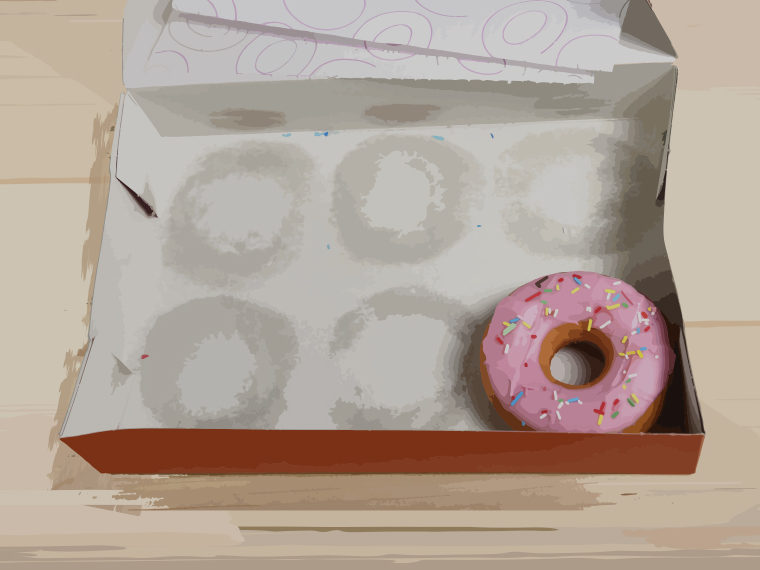Complexity and a failure to boost platform revenue were culprits
The explosive growth in digital advertising in the past 10 years — rising from 17% of total global advertising to 53% — not only upended traditional advertising, it also ushered in a completely new process called programmatic advertising. Rather than dapper marketing executives’ making deals over two-martini lunches, teams of T-shirt-clad engineers and data scientists hunched over laptops are automating the advertising process and using machine learning and artificial intelligence to place and personalize ads.
A prominent example of programmatic advertising is real-time bidding (RTB) on display ads, whereby computer algorithms bid against each other for each impression.
That creepy ad that follows you around the web is likely a result of a retailer whose website you recently visited winning just such an auction. Whether you’re buying the ads, selling ad space on your platform, or just browsing the web as a consumer, programmatic advertising with real-time bidding has become a part of everyone’s digital life.
Opt In to the Review Monthly Email Update.
The programmatic advertising industry recently went through a period of rapid change in auction format. One initially promising new format, called a “soft-floor” auction (explained below), became popular in the early 2010s, but was all but abandoned about five years later. One possible reason the industry first adopted soft floors and then abandoned them is laid out by UCLA Anderson’s Robert Zeithammer in Management Science. Zeithammer found that, while attractive in a short run (before bidders fully adjusted their strategies), soft floors were bound to disappoint in the long run. He showed that the conditions under which soft floors can be profitable are quite limited. And they impose a severe complexity burden on the bidder who is trying to optimize a bidding strategy.
What are soft-floor auctions? They are a hybrid between the old standard, called second-price auctions, and the new (at least for now) standard of first-price auctions.
In a second-price auction, the highest bidder wins but only pays one cent over the price bid by the second-highest bidder. Google Ads now uses a first-price auction format, which is much more straightforward; the highest bidder wins and pays the actual winning bid price. Both auction types enable the website offering the ad space to set a reserve price — a price below which the publisher will not include a digital ad on its website. The reserve price is also known as a hard floor.
A soft floor is a bid level above the hard floor that acts as an automatic switch between the two pricing rules: When only lower bids are received, the soft-floor auction works as a first-price auction. But as soon as a bid above the soft floor arrives, the auction becomes a second-price auction and the soft floor becomes its new hard floor. Thus, soft-floor auctions promise to put pricing pressure on occasional lone high bidders; when they appear, the soft floor hardens into a new hard floor, higher than the bids of competing bidders that would set the lone high bidder’s price in a standard second-price auction.
At first glance, soft floors can only help the auctioneer: As long as bidders continue to bid the same as they did in the old second-price auction, the logic of putting pricing pressure on high bidders works well. Moreover, when high bidders do not show up to a given auction, the winning low bidder also ends up paying more, that is, he pays his own bid instead of the second-highest bid submitted by a lower competitor. Zeithammer’s short-run experiments with the format indeed revealed massive profitability gains for the auctioneer. But what if bidders are strategic and do not continue bidding the same amount as before? Analyzing what should happen in such a “long run” scenario is at the heart of Zeithammer’s model.
He shows that in the long run, soft floors will not actually deliver increased revenue to website publishers except in certain narrow circumstances. In addition, he found that there were circumstances under which website publishers were worse off using a second-price auction with a soft floor.
Zeithammer’s model finds that a soft floor has no effect on revenue when the value distributions are symmetric across bidders, that is, when no systematically high bidders are present.
When all bidders adjust their bidding strategies to account for the soft floor, the auction ends up selecting the same winner as the auction without the soft floor. A famous “revenue equivalence” principle from auction theory then implies that the auctioneer’s profit cannot change, either.
Therefore, if the high bidders whom soft floors are supposed to put pressure on do not have a systematic identity (different bidders can have high willingness to pay for the impression at different times of day, for example), soft floors cannot help the auctioneer make more money. But they still come with an added bidding complexity when compared to the simpler, old second-price auctions.
The presence of a systematic high bidder (such as a re-targeting high-end retailer) does not guarantee soft floors are a good idea for the auctioneer. Zeithammer shows that the auctioneer’s long-run revenue can even decline in their presence, especially when the soft floor is set relatively close to the hard floor. But Zeithammer also gives at least one example in which soft floors may help the auctioneer. His example involves a soft floor so high that the auction effectively becomes a first price auction — the format currently used in the industry.
While the soft-floor auction thus turned out to be a dead-end evolutionary branch in the development of advertising auctions, the branch was close to the main trunk of the tree, in the area between the defunct second-price auctions and the current standard of first-price auctions. And as the industry continues to evolve, additional innovations in auction rules are sure to gain prominence and dethrone the first-price auction. Zeithammer says he is following the developments closely, as a potential new research question.
Featured Faculty
-
Robert Zeithammer
Professor of Marketing
About the Research
Zeithammer, R. (2019). Soft floors in auctions. Management Science, 65(9), 3949–4450. doi: 10.1287/mnsc.2018.3164





